A rigid wire loop of square shape having side of length L and resistance R is moving along the x-axis with a constant velocity v0 in the plane of the paper. At t=0, the right edge of the loop enters a region of length 3L where there is a uniform magnetic field B0 into the plane of the paper, as shown in the figure. For sufficiently large v0 the loop eventually crosses the region. Let x be the location of the right edge of the loop. Let v(x), I(x) and F(x) represent the velocity of the loop, current in the loop, and force on the loop, respectively, as a function of x. Counter-clockwise current is taken as positive.
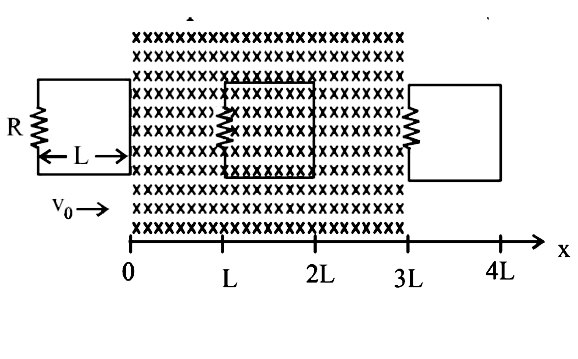 . Which of the following schematic plot(s) is (are) correct? (Ignore gravity)
. Which of the following schematic plot(s) is (are) correct? (Ignore gravity)




The correct Answer is:b,d

Emf is induced in the loop only at the time of entering the field and at the time of exiting the field. In between there will be a time interval when no emf is induced in the loop and no current flows through it.
Refer part I of figure when loop has already entered the field by a distance x. Let speed of loop at this instant is u. Emf induced in the loop can be written as follows:
e=BLv
Current flowing through the loop can be written as follows:
I=eR⇒I=BLRv ....(1)
Magnetic force acts opposite to velocity or along the negative X-axis, Magnetic force can be written as follows:
F=−ILB⇒F=−B2L2Rv ....(2)
We can now apply Newton.s second law of motion as follows:
−B2L2Rv=mdvdt⇒−B2L2Rv=mdvdxdxdt
⇒−B2L2Rv=mdvdxv⇒dvdx=−B2L2mR
⇒dv=−B2L2mRdx⇒v∫v0dv=−B2L2mRx∫0dx
⇒v−v0=−B2L2mRx
⇒v=v0−B2L2mRx ....(3)
We can see that velocity is decreasing linearly with the distance. Above obtained equation is valid only for x=0 to x=L. Afterwards up to x=3L velocity remains constant. Variation in velocity for the interval x=3L to x=4L will be similar to equation (3) although exact equation will be different. We can see that option (b) correctly describes variation of velocity with the distance .
We can see that direction of force acting on loop remains same (along negative X-axis) while entering and exiting the magnetic field, hence option (c) cannot be correct.
I=BLR(v0−B2L2mRx)
We can see that variation of current with the distance is linear. But current is counter clockwise (positive) while entering and clockwise (negative) while exiting the field. Hence option (a) cannot be correct but option (d) is correct.
Topper's Solved these Questions
- MOVING CHARGES AND MAGNETISMBOOK - MODERN PUBLICATIONCHAPTER - MOVING CHARGES AND MAGNETISMEXERCISE - COMPETITION FILE (D. MULTIPLE CHOICE QUESTIONS)
10 Videos
- MOVING CHARGES AND MAGNETISMBOOK - MODERN PUBLICATIONCHAPTER - MOVING CHARGES AND MAGNETISMEXERCISE - COMPETITION FILE (ASSERTION TYPE QUESTIONS)
10 Videos
- MOVING CHARGES AND MAGNETISMBOOK - MODERN PUBLICATIONCHAPTER - MOVING CHARGES AND MAGNETISMEXERCISE - COMPETITION FILE (B. MULTIPLE CHOICE QUESTIONS)
79 Videos
- MAGNETISM AND MATTERBOOK - MODERN PUBLICATIONCHAPTER - MAGNETISM AND MATTEREXERCISE - CHAPTER PRACTICE TEST FOR BOARD EXAMINATION
16 Videos
- NUCLEIBOOK - MODERN PUBLICATIONCHAPTER - NUCLEIEXERCISE - CHAPTER PRACTICE TEST FOR BOARD EXAMINATION
15 Videos
Similar Questions
A square loop of side d is moved with velocity vˆi in an non-uniform magnetic field B0axˆk then the emf induced shown is?
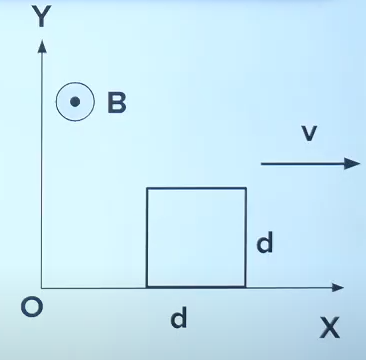
View SolutionA rectangular loop of dimensions l & w and resistance R moves with constant velocity V to the right as shown in the figure. It continues to move with same speed through a region containing a uniform magnetic field B directed into the plane of the paper & extending a distance 3W.
Sketch the flux, induced emf & external force acting on the loop as a function of the distance.
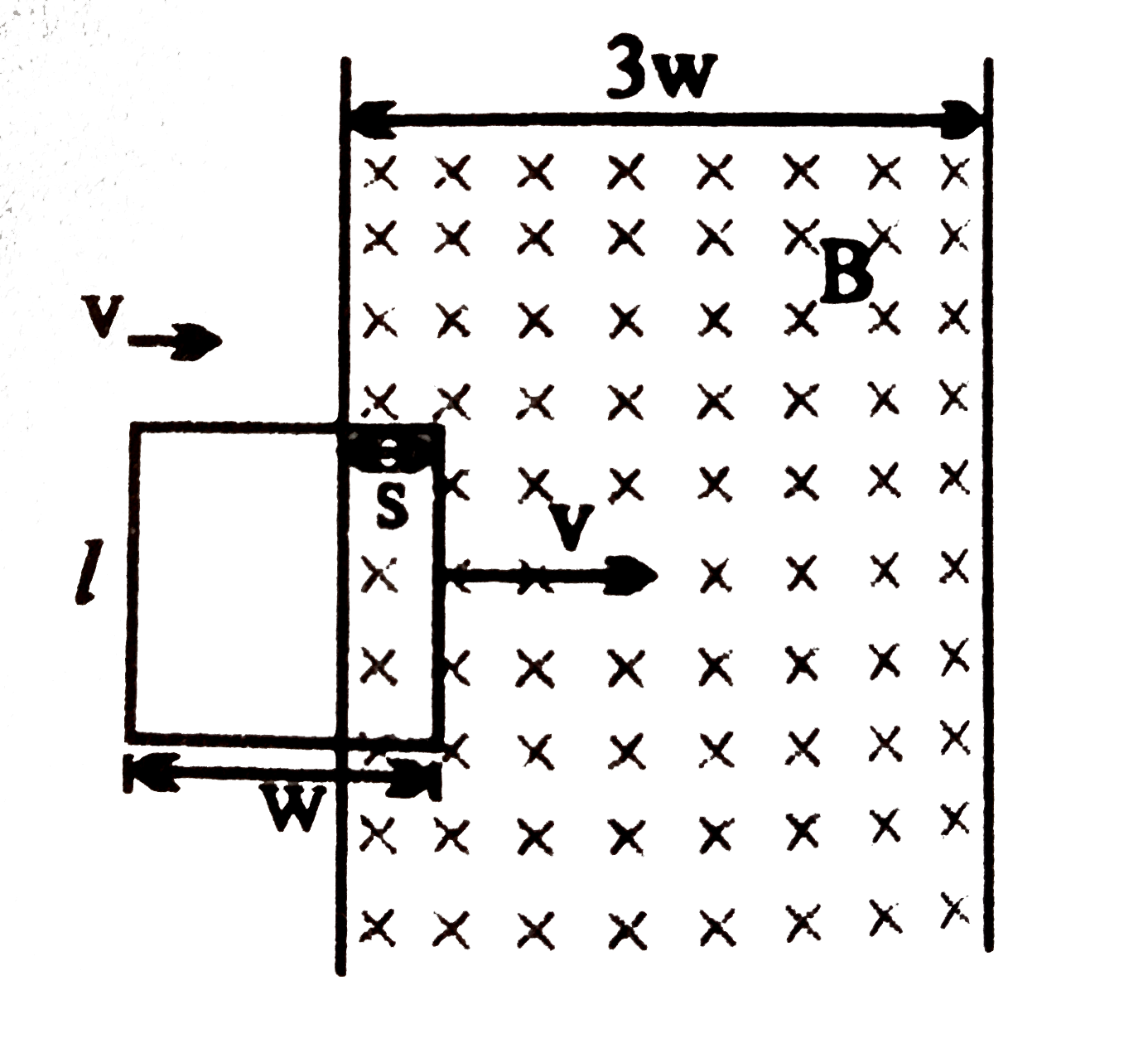
View Solution
Knowledge Check
A conducting loop carrying a current I is placed in a uniform magnetic field ponting into the plane of the paper as shown. The loop will have a tendency to
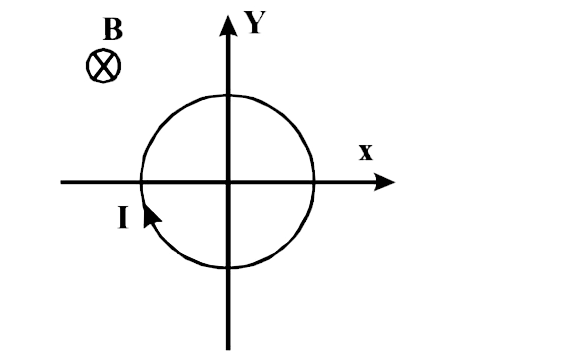 AcontractBexpandCmove towards +vex−aξsDmove towards −vex−aξs
AcontractBexpandCmove towards +vex−aξsDmove towards −vex−aξsThere is a uniform magnetic field directed perpendicular and into the plane of the paper. An irregular shaped conducting loop is slowly changing into a circular loop in the plane of the paper. Then
Acurrent is induced in the loop in the anticlockwise directionBcurrent is induced in the loop in the clockwise directionCAltrenating current is induced in the loopDno current is induced in the loopA rectangular loop of wire in the plane of the paper starts outside a perpendicular uniform magnetic field directed into the paper as shown in the following figure. The loop is pulled with a constant velocity through the magnetic field and out the other side. Which of the following graphs would best represent the variation of the electric current in the wire with time?
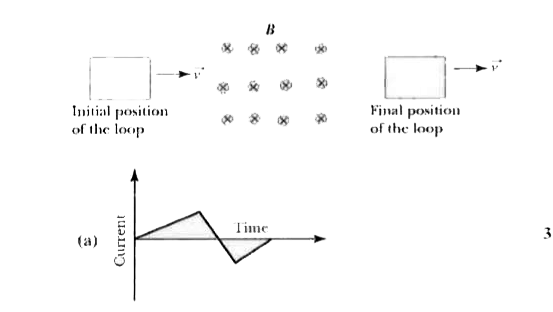 A
A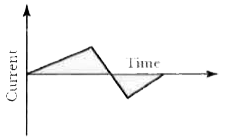 B
B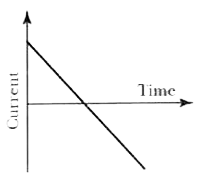 C
C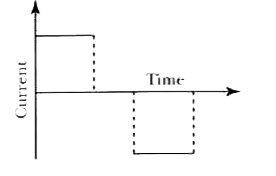 D
D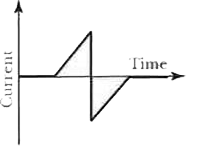
A conducting rod AC of length 4l is rotated about point O in a uniform magnetic field →B directed into the plane of the paper. AO=landOC=3l. Find VA−VC.
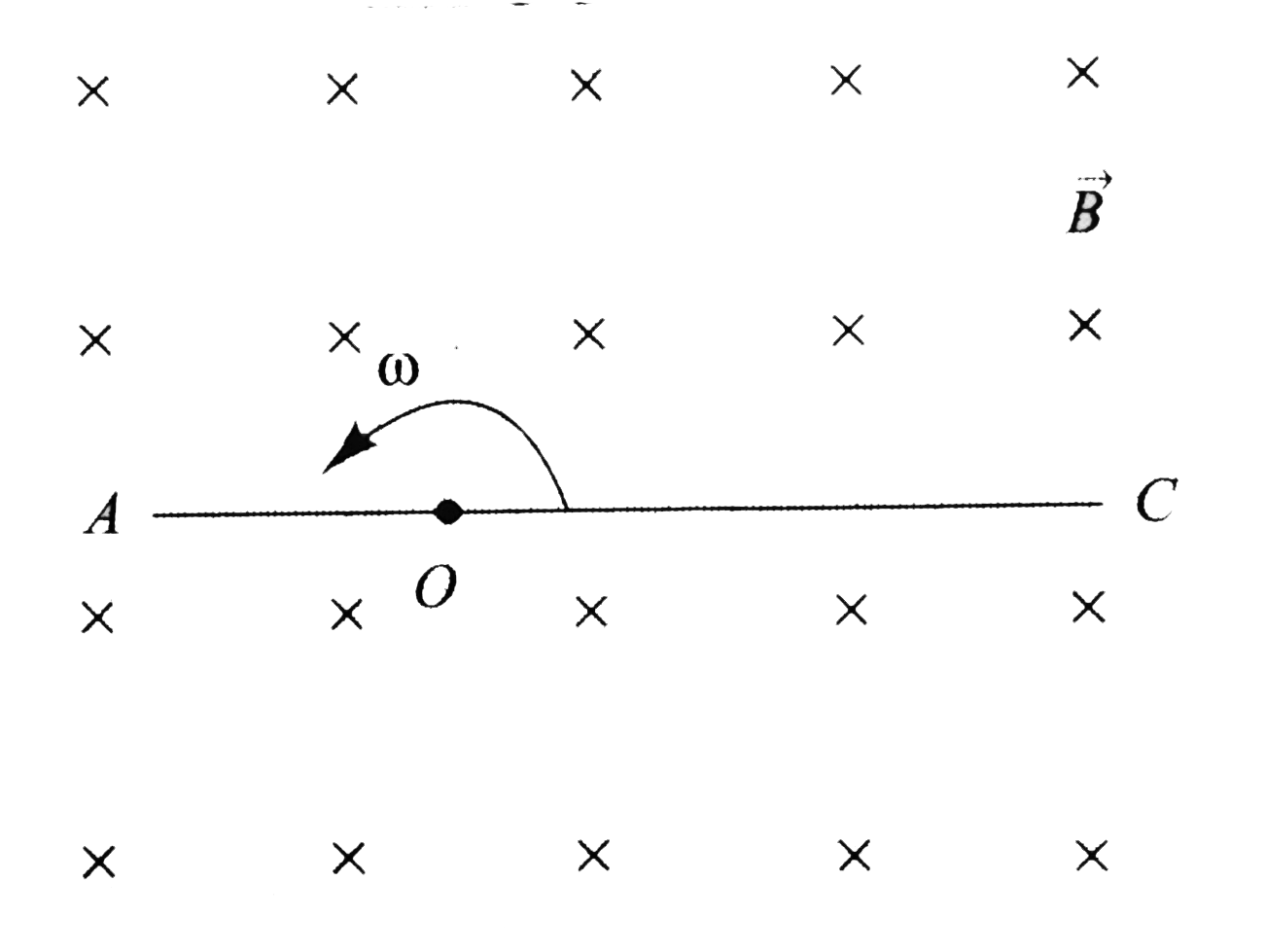
View SolutionA square loop of a conducting material of side l and resistance r is dragged through a uniform magnetic field B with uniform velocity v keeping the plane of the loop perpendicular to the direction of the field. What is the current flowing through the loop?
View SolutionAn equilateral triangular loop ADC having some resistance is pulled with a constant velocity v out of a uniform magnetic field directed inot the paper. At time t=0, side DC of the loop at is at edge of the magnetic field.
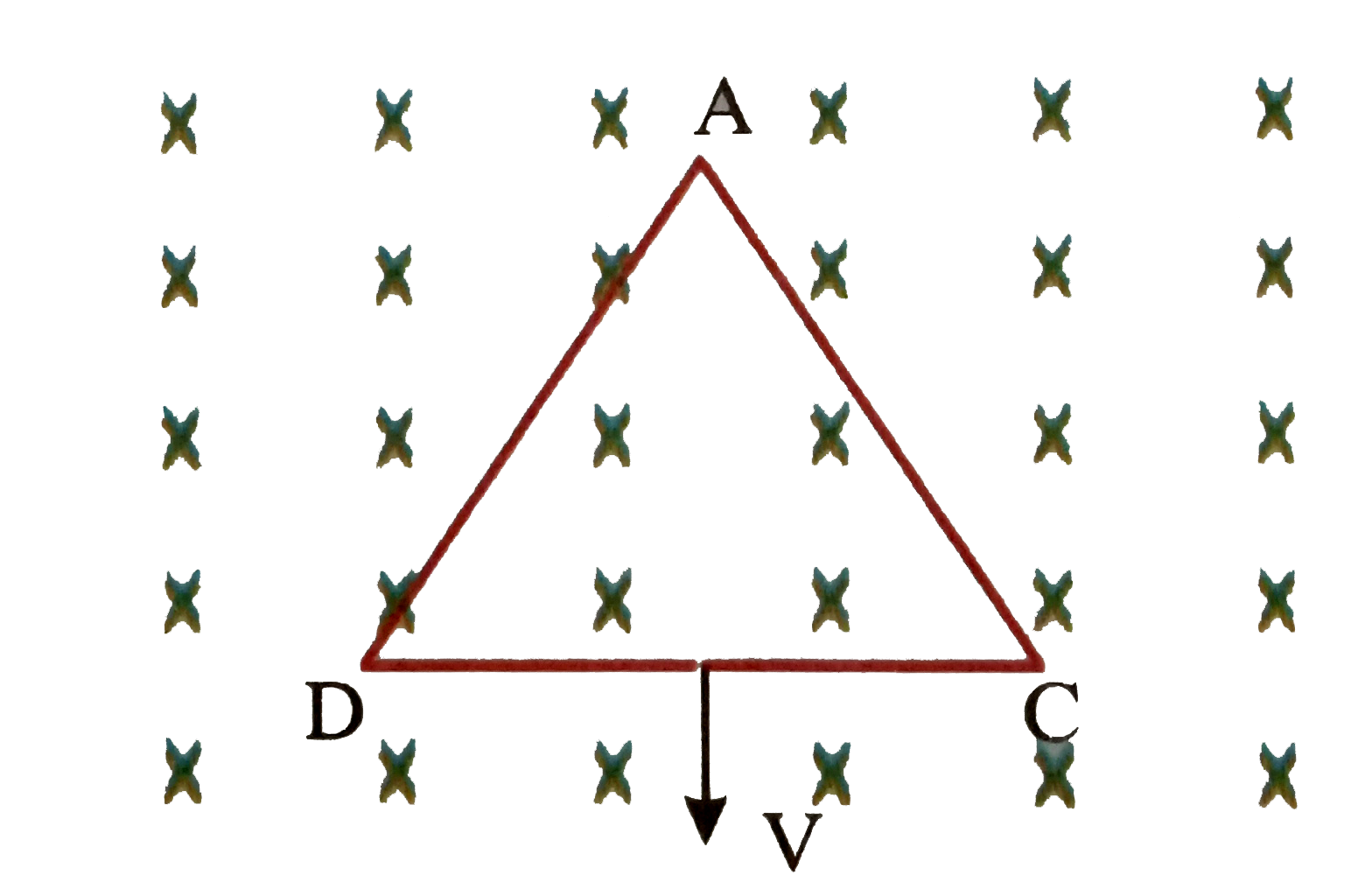
The induced current (i) versus time (t) graph will be as
View SolutionA square-shaped conducting wire loop of dimension a moving parallel to the x-axis approaches a square region of size b (a<b) where a uniform magnetic field B exists pointing into the plane of the paper (see figure). As the loop passes through this region, the plot correctly depicting its speed (v) as a function of x is
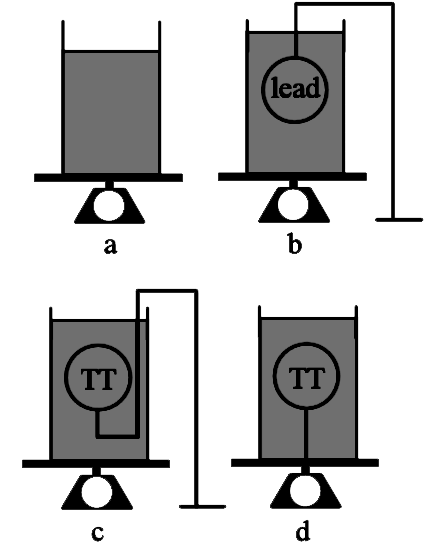
View SolutionA square loop of side L, resistance R placed in a uniform magnetic field B acting normally to the plane of the loop. If we attempt to pull it out of the field with a constant velocity v, then the power needed is
View Solution
